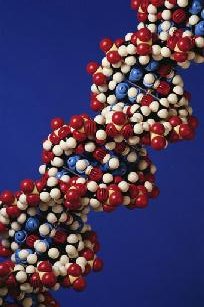
But while researchers have long known that the ribosome builds proteins, little is understood about exactly how it adds to growing proteins and how it releases the finished product.
In hunting for these details, scientists have focused on four RNA building blocks, or nucleotides, deep within the machine that are identical in every species, from bacteria to humans. Because they sit where the protein chain is actually built, these “universally conserved” nucleotides in the ribosome were thought to help that process.
“Most scientists have said that these four nucleotides must be critical for synthesis of the growing protein because of their location, and we fully expected that our studies would prove that to be true,” says Rachel Green, an associate investigator from the Howard Hughes Medical Institute. “We were shocked that they appear to play very little if any role in building proteins, and instead normally speed the protein’s release at the right time.
“Our finding underscores the idea that if you build a well-defined system to study a biologic question, you’ll get answers you didn’t expect,” adds Green.
Instead of validating existing ideas about the role played by these conserved nucleotides, the researchers’ work suggests a brand new model, says Green. The ribosome actually has another set of evolutionarily unchanged nucleotides, slightly farther from its “business end.” Green and her colleagues believe these nucleotides are really responsible for catalyzing the protein’s construction, simply by properly orienting the new building block and the chain, an idea they are testing now.
For the current study, graduate student Elaine Youngman first created 12 mutant ribosomes – the 12 singly changed alternatives to the natural ribosome. (Four nucleotide building blocks are used to make RNA. Each mutant had one of the four conserved nucleotides replaced with one of its three alternatives.)
Then Youngman tested the ability of each of the purified mutant ribosomes to add a molecule called puromycin onto a growing protein chain. Puromycin looks and acts like a normal protein building block, or amino acid, ready for protein synthesis. However, each amino acid normally used by the ribosome has an identifying RNA “tag,” which puromycin almost entirely lacks.
“We had hoped to see one of the mutants really stand out as being incapable of doing this reaction,” says Green. “But instead, none of the mutants could do it efficiently, which left us scratching our heads.”
So the researchers tested the ribosomes’ ability to use their normal starting materials: actual amino acids attached to their correct RNA tag. Much to the researchers’ surprise, the mutant ribosomes performed perfectly.
“The key difference between puromycin and the real amino acids used in this reaction is that puromycin lacks the RNA tag,” says Green. “Researchers use puromycin all the time to study ribosome function, for many good reasons. But now we know ribosomes don’t always treat this molecule as they would real amino acids.”
As a result, she says, scientists should carefully evaluate whether the use of puromycin could have skewed interpretation of their experiments.








Comments are closed.